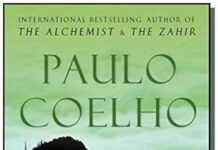In an era rife with polarized opinions and diminishing dialog, Milan Kordestani’s Bridging the Divide arrives as a timely intervention, inviting readers to reconsider how we engage with one another across contentious landscapes. This guide to civil discourse does not merely prescribe rules for conversation; it embarks on a thoughtful exploration of empathy, understanding, and the art of listening. As societal fault lines deepen, Kordestani offers a roadmap aimed at reconnecting fractured voices-an endeavor both challenging and necessary. This review delves into the strengths and nuances of his approach, examining how effectively Bridging the Divide equips its audience to navigate the complex terrain of modern dialogue.
Exploring the Core Principles that Define Milan kordestani’s Approach to Effective Civil Discourse and Dialogue
Milan Kordestani emphasizes the power of active listening as a cornerstone for any meaningful dialogue.For him, effective communication is less about speaking and more about truly understanding the perspectives that differ from our own. This principle fosters an environment where participants feel heard and valued,thereby encouraging open,respectful exchanges rather than confrontations. He champions the idea that every voice holds intrinsic worth and that empathy acts as the bridge across even the widest ideological chasms.
Another defining element in Kordestani’s framework is the commitment to intentional humility. He proposes that entering conversations with a willingness to acknowledge our own limitations and biases dismantles barriers before thay form.This mindset nurtures a shared pursuit of truth rather than victory, anchoring discussions in curiosity rather than assumption. Below is a concise overview of the principles he advocates:
- Active Listening: Prioritize understanding over responding.
- Empathy: Seek to feel and appreciate others’ experiences.
- Intentional Humility: Stay aware of personal limits and biases.
- Respectful Engagement: Honor differences without hostility.
- Shared Curiosity: Encourage asking questions to explore ideas.
analyzing the Structure and Flow of Bridging the Divide for Optimal Reader Engagement and Comprehension
The essence of milan Kordestani’s guide lies in its carefully crafted framework that balances clarity with depth, ensuring the reader is neither overwhelmed nor underwhelmed. The progression from foundational concepts to actionable strategies is seamless, allowing for natural cognitive digestion. Key ideas are introduced through concise chapters, which utilize real-world examples without diverging into tangents. This focused approach maintains momentum, while reinforcing core themes through recurring motifs that gently remind readers of the broader narrative.
Moreover, the flow is enriched by a thoughtful blend of narrative and analytical elements, creating a rhythm that appeals both to emotional resonance and intellectual curiosity. Consider the table below, which illustrates how pacing and content types alternate to maximize engagement:
| Section Type | Average length | Purpose |
|---|---|---|
| Personal Anecdotes | 2-3 paragraphs | Build empathy and relatability |
| Theoretical Insight | 4-5 paragraphs | Provide deep understanding |
| Actionable Tips | Bullet Lists | Facilitate request of ideas |
Additionally, the strategic use of unnumbered lists punctuates the prose by summarizing complex ideas succinctly, making the text accessible while preserving nuance. For instance, Kordestani highlights essential qualities for civil discourse such as:
- Active Listening: fostering genuine understanding beyond mere response
- Patience: allowing space for diverse perspectives to unfold
- Empathy: connecting with others’ experiences without judgment
How Bridging the Divide Addresses Contemporary Challenges in Polarized Communication and Social Fragmentation

In an era defined by polarized opinions and fragmented social spheres, Milan Kordestani’s framework emerges as a vital tool for fostering understanding. His approach centers on active listening and intentional dialogue, which create spaces where individuals feel seen and respected, rather than dismissed or attacked.By encouraging participants to acknowledge shared values and mutual goals, kordestani reorients conversations from confrontational to collaborative, helping to dissolve the rigid barriers that frequently enough exacerbate societal divides.
The tangible benefits of this method resonate clearly across various dimensions of social interaction:
- Reduction of echo chambers: Facilitates exposure to diverse perspectives without triggering defensive reactions.
- Strengthening of community bonds: Cultivates empathy and reintegration within fractured social groups.
- Promotion of critical thinking: Encourages questioning of assumptions rather than immediate judgment.
| Challenge | Bridging Strategy | Impact |
|---|---|---|
| Ideological Entrenchment | Encouraging curiosity over judgment | Opens pathways to reconsideration |
| Social Isolation | Building inclusive conversation circles | Fosters community resilience |
| Misinformation Spread | Promoting fact-based dialogue | enhances collective discernment |
The Role of Empathy and Active Listening as Presented in Milan Kordestani’s Guide to Healing Divides
In Milan Kordestani’s profound exploration of interpersonal and societal healing, empathy emerges not merely as a feel-good concept but as a strategic pillar for civil discourse.He urges readers to step beyond their own perspectives, advocating for a genuine understanding of others’ emotions and experiences. Through this lens, empathy becomes an active endeavor, inspiring individuals to recognize common humanity even amid disagreement. This practice, Kordestani suggests, breaks down emotional barriers and fosters an environment where dialogue can thrive without judgment or defensiveness.
Equally critical is the art of active listening, which Kordestani positions as the backbone of meaningful communication. This goes beyond waiting for one’s turn to speak – it involves fully engaging with the speaker’s message, clarifying understanding, and offering thoughtful feedback. the guide highlights several key behaviors that facilitate active listening:
- Maintaining open body language to signal attentiveness
- Asking open-ended questions to encourage deeper expression
- Reflecting back the speaker’s feelings and points without immediate judgment
| Empathy | active Listening |
|---|---|
| Feeling with others | Hearing with intent |
| Emotional connection | Clarifying meaning |
| Nonjudgmental mindset | Responsive feedback |
| building trust | Encouraging dialogue |
Kordestani’s approach reminds us that healing divides requires more than just speaking out – it demands listening deeply and feeling authentically. By weaving these practices together,his guide crafts a framework for encounters that are as respectful as they are transformative,paving the way for genuine reconciliation and shared understanding.
Practical Techniques and Real-World Applications Recommended for Implementing Civil Discourse in Daily Life
Implementing civil discourse daily requires more than just good intentions; it demands intentional techniques that foster respect and understanding. milan Kordestani emphasizes active listening as a cornerstone-truly hearing others without promptly formulating a response breaks down barriers. Pair this with the practice of asking open-ended questions, which invites deeper exploration rather than confrontation. Another vital approach is managing emotional triggers by employing a brief pause before responding,allowing reason to steer the interaction. these practical tools nurture an environment where diverse viewpoints can be shared without fear of dismissal or hostility.
Real-world applications of these methods span from casual conversations to professional settings. In workplaces,such as,structured dialogue sessions using simple frameworks like the “Respect,Reflect,Respond” model help maintain constructive communication among teams. At home, families can adopt similar principles to navigate conflicts without escalating tensions. Below is a speedy reference table highlighting these techniques and their usage contexts for easy implementation:
| Technique | Daily Scenario | Key Benefit |
|---|---|---|
| Active Listening | Friendship discussions | Enhances mutual respect |
| Open-Ended questions | Team meetings | Encourages broader perspectives |
| Emotional Pause | Family disagreements | Reduces reactive responses |
| Respect, Reflect, Respond | Community forums | Supports balanced dialogue |
Assessing the Balance Between Theory and Practice in Kordestani’s Framework for Constructive Conversations
milan Kordestani’s framework offers a compelling marriage between abstract principles and actionable steps, ensuring that conversations don’t remain trapped in the realm of theory alone. His approach acknowledges that while understanding foundational concepts like empathy, active listening, and respect is crucial, their true value emerges when these ideas are skillfully woven into real-world dialogue. This delicate interplay elevates discourse from mere intellectual exercise to a transformative experiance, where participants move towards genuine understanding rather than entrenched disagreement.
The framework’s practical emphasis is evident in its clear guidelines,which include:
- Structured Turn-taking: Preventing interruptions while encouraging thoughtful responses.
- Contextual Awareness: Tailoring communication styles to fit diverse conversational settings.
- emotional Calibration: Balancing passion with composure to sustain constructive engagement.
Together, these pillars form a solid base that supports the theoretical scaffolding Kordestani outlines. The balance is not always perfect-occasional tension arises when idealism clashes with messy human emotion-but it is indeed precisely this tension that revitalizes conversations and nurtures growth.
| Component | Theoretical Role | Practical Application |
|---|---|---|
| Empathy | Fosters understanding of differing perspectives | Active listening and validation in conversation |
| Respect | Establishes a safe communicative environment | Polite language and avoiding personal attacks |
| Clarity | Reduces ambiguity and misunderstanding | Precise phrasing and summarization of points |
The Impact of Bridging the Divide on Diverse Audiences: Educational, Professional, and community Settings
Milan Kordestani’s approach to civil discourse resonates powerfully across varied environments, fostering understanding and empathy where division once reigned. In educational settings, his principles encourage students and educators alike to embrace differing viewpoints as catalysts for growth rather than conflict.this cultivates classrooms where debate is not about winning but about deepening comprehension and respect. Educators report increased student engagement, as learners feel safe to express opinions and critically analyze perspectives without fear of judgment or hostility.
within professional and community contexts, Kordestani’s framework serves as a stabilizing force amid the complexities of collaboration. Teams that adopt his guidelines experience:
- Improved conflict resolution skills
- Enhanced creativity through diverse input
- Strengthened interpersonal relationships
- Greater inclusivity fostering collective ownership
These outcomes contribute not only to productivity but to the creation of environments where every voice is valued. The ripple effect benefits communities at large by transforming dialogue into avenues for connection, rather than division.
| Setting | Key Benefit | Impact Example |
|---|---|---|
| Education | Safe dialogue spaces | students openly discuss controversial topics |
| Professional | Conflict reduction | Teams resolve disputes through calm discussion |
| Community | Inclusivity | Neighborhood forums with diverse participation |
Stylistic Choices and Narrative voice That Enhance the Accessibility of Complex Communication Concepts
Milan kordestani masterfully employs a conversational tone that gently guides readers through intricate ideas without overwhelming them. His narrative voice is approachable yet authoritative, striking a balance that fosters trust and engagement. This thoughtful interplay of simplicity and depth invites a broad audience to explore the nuances of civil discourse in a way that feels personal rather than academic. By integrating relatable analogies and everyday scenarios, Kordestani transforms dense communication theories into vivid, digestible stories that resonate in real-world interactions.
Strategically, Kordestani uses stylistic devices that serve accessibility and clarity concurrently. The deployment of:
- short, punchy sentences to emphasize key points, preventing reader fatigue;
- strategic repetition for reinforcing central concepts without redundancy;
- bullet points and tables for organizing information visually, aiding comprehension;
- inclusive language that invites diverse perspectives into the conversation.
Consider the following example illustrating the delicate balance between active listening and assertive expression:
| Communication Approach | Key Element | Example Phrase |
|---|---|---|
| Active Listening | Empathy | “I hear you and understand your concern.” |
| Assertive Expression | Clarity | “I feel that we need to consider this perspective.” |
This table, simple yet effective, showcases how clear labels paired with concrete examples enhance the reader’s grasp of complex communication techniques without diluting nuance. Kordestani’s style is not just informative-it is an invitation to practice civility actively and thoughtfully.
Recommendations for Readers Seeking to Build Stronger Interpersonal and Cross-Cultural Connections
Creating meaningful connections across cultural and interpersonal boundaries requires more than just good intentions; it demands intentionality, empathy, and a genuine curiosity about others’ perspectives. Embracing Milan Kordestani’s approach, readers are encouraged to pause before reacting-listening actively to understand rather than to reply. Cultivating this practice helps dismantle preconceived biases and fosters an environment where respectful dialogue can thrive. Remember, such connections are nurtured through patience and openness, not by rushing to impose one’s own viewpoint.
To put this into action, consider weaving these habits into your daily interactions:
- Ask open-ended questions that invite elaboration rather than yes/no answers.
- Celebrate cultural nuances as opportunities to broaden your worldview.
- Reflect back what you hear to confirm understanding before responding.
- Acknowledge emotions underlying words to create deeper empathy.
| Practice | Key Benefit | Example |
|---|---|---|
| Active Listening | Builds trust | Reflecting back what you heard |
| Cultural Awareness | Enhances empathy | Learning customs before conversations |
| Open-Ended Queries | Encourages sharing | “What was that experience like for you?” |
| Emotion Recognition | Deepens connection | “It sounds like that really impacted you.” |
reflections on the Ethical Foundations Underpinning Civil Discourse in Milan Kordestani’s Work
At the heart of Milan Kordestani’s approach lies a profound commitment to respectful engagement and mutual understanding. he emphasizes that the ethical groundwork for civil discourse isn’t merely about exchanging words politely but involves sincerely valuing divergent perspectives as essential to collective growth. This perspective urges participants to move beyond entrenched positions and approach conversations with empathy, recognizing the inherent dignity of every individual involved. By fostering an environment where openness coexists with sincerity, Kordestani’s work challenges us to redefine debate not as a battlefield but as a shared quest for truth.
- Integrity: anchoring conversations in honesty and consistency.
- Empathy: Striving to genuinely understand others’ experiences.
- Patience: Allowing space for thoughtful reflection rather than quick rebuttals.
- Humility: Accepting that no one holds a monopoly on wisdom.
To further illuminate these principles, consider the following breakdown of key ethical virtues that Kordestani highlights as pillars of civil discourse:
| Ethical Virtue | Practical Manifestation | Impact on Dialogue |
|---|---|---|
| Respect | Active listening without interruption | Builds trust and openness |
| Fairness | Considering opposing views without bias | Encourages balanced discussions |
| Courage | Addressing challenging topics honestly | Promotes authenticity and growth |
The Writer Behind the Wisdom: An Insightful Profile of Milan Kordestani and His Motivations for Writing This Guide
Milan Kordestani emerges not just as an author, but as a catalyst for meaningful connection in an age often defined by division. His drive to compose this guide stems from a deeply held belief that dialogue,when nurtured with empathy and respect,can dissolve barriers and foster genuine understanding. An experienced communicator and observer of societal dynamics, Milan channels his background in psychology and mediation into actionable advice that resonates across diverse audiences. His reflections are not theoretical musings but rooted in real-world encounters where conversations have either built bridges or widened chasms.
at the core of his motivation lies a commitment to several pivotal principles, which underpin the philosophy of his guide:
- Empathy over judgment: Prioritizing compassion to hear the person beyond the argument.
- Curiosity instead of assumption: Cultivating an open mind to understand differing perspectives deeply.
- Courage in vulnerability: Encouraging honest expression even when opinions diverge.
- Patience for progress: Recognizing that meaningful discourse is often a gradual process, not a quick fix.
| Motivation | Core Belief | impact |
|---|---|---|
| Bridging divides | Unity in dialogue | Creates communal harmony |
| Promoting empathy | Understanding beyond bias | Reduces polarisation |
| Encouraging vulnerability | authentic connections | Builds trust |
In the ever-polarized landscape of modern conversation, Bridging the Divide stands as a steady beacon, inviting readers not just to listen but to understand. Milan Kordestani’s guide does more than offer strategies for dialogue-it gently challenges us to reconsider how we engage with difference itself. Whether a seasoned mediator or someone simply weary of endless arguments, this thoughtful exploration leaves you with tools and, more importantly, the hope that civil discourse remains within our grasp. As the final page turns, one is left pondering not only the art of conversation but the possibility of connection in a divided world.










